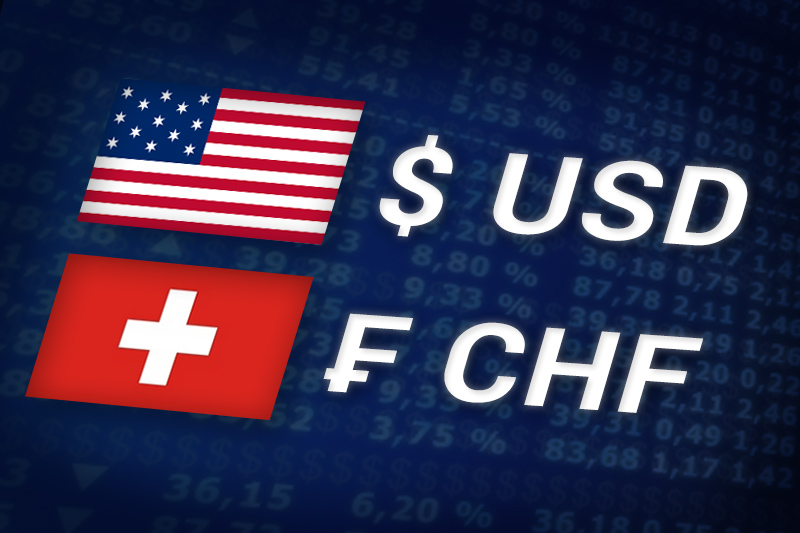Investing.com’s stocks of the week
Investing.com – The U.S. dollar snapped four days of gains against the Swiss franc on Monday, retreating from a nine-day high, as market sentiment was weighed by ongoing violence in the MENA region, lingering fears over Japan’s nuclear crisis as well as concerns over the euro zone’s sovereign debt crisis.
USD/CHF consolidated at 0.9184 during European morning trade, shedding 0.17%; the pair earlier rose to 0.9233, the highest since March 15.
The pair was likely to find support at 0.9073, Friday’s low and short-term resistance at 0.9250, the high of March 15.
Earlier in the day, Japan’s nuclear safety agency said radiation levels in water in the stricken Fukushima Daiichi No. 2 reactor building were measured at more than 1,000 millisieverts per hour, while locals within a 20 kilometer evacuation zone were asked not to return to the area by officials.
Meanwhile, coalition forces in Libya allowed rebel forces to gain ground over the weekend. Syria deployed its army to the country's main port on Sunday in an attempt to rein in spreading protests across the country, while in Yemen talks stalled between the government and opposition.
Elsewhere, German Chancellor Angela Merkel's conservative party suffered a loss in elections in the key state of Baden-Wuerttemberg over the weekend, which could limit Merkel's ability to pass legislation as her coalition government deals with nuclear power, military action in Libya and the ongoing euro zone debt crisis.
The greenback was boosted earlier by hawkish comments from regional Federal Reserve officials.
Philadelphia Federal Reserve Bank President Charles Plosser said on Friday the U.S. central bank would have to reverse its easy money policy in the "not-too-distant future" to avoid sowing the seeds of inflation.
Plosser's comments were followed by St. Louis Fed President James Bullard, who said on Saturday that lengthening the 'extended period' of low rates could encourage a liquidity trap.
Meanwhile, the Swissy was also up against the euro, with EUR/CHF dropping 0.42% to hit 1.2905.
Later in the day, the U.S. was to release industry data on pending home sales as well as official data on personal spending, personal income and personal consumption expenditures.
USD/CHF consolidated at 0.9184 during European morning trade, shedding 0.17%; the pair earlier rose to 0.9233, the highest since March 15.
The pair was likely to find support at 0.9073, Friday’s low and short-term resistance at 0.9250, the high of March 15.
Earlier in the day, Japan’s nuclear safety agency said radiation levels in water in the stricken Fukushima Daiichi No. 2 reactor building were measured at more than 1,000 millisieverts per hour, while locals within a 20 kilometer evacuation zone were asked not to return to the area by officials.
Meanwhile, coalition forces in Libya allowed rebel forces to gain ground over the weekend. Syria deployed its army to the country's main port on Sunday in an attempt to rein in spreading protests across the country, while in Yemen talks stalled between the government and opposition.
Elsewhere, German Chancellor Angela Merkel's conservative party suffered a loss in elections in the key state of Baden-Wuerttemberg over the weekend, which could limit Merkel's ability to pass legislation as her coalition government deals with nuclear power, military action in Libya and the ongoing euro zone debt crisis.
The greenback was boosted earlier by hawkish comments from regional Federal Reserve officials.
Philadelphia Federal Reserve Bank President Charles Plosser said on Friday the U.S. central bank would have to reverse its easy money policy in the "not-too-distant future" to avoid sowing the seeds of inflation.
Plosser's comments were followed by St. Louis Fed President James Bullard, who said on Saturday that lengthening the 'extended period' of low rates could encourage a liquidity trap.
Meanwhile, the Swissy was also up against the euro, with EUR/CHF dropping 0.42% to hit 1.2905.
Later in the day, the U.S. was to release industry data on pending home sales as well as official data on personal spending, personal income and personal consumption expenditures.
